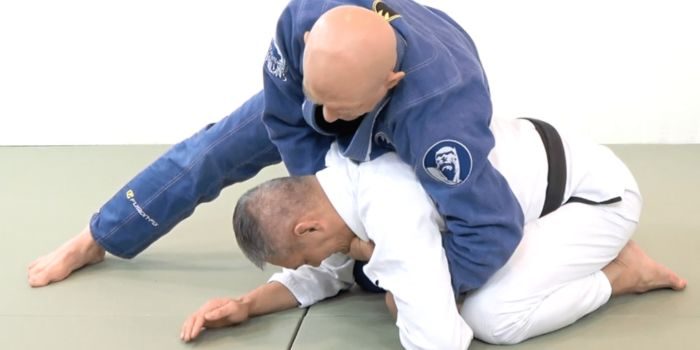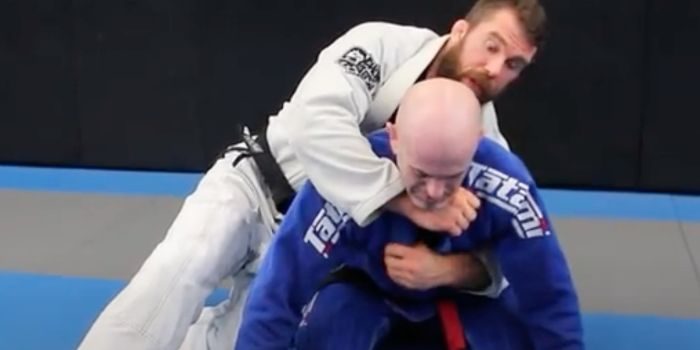As someone deeply entrenched in the world of Brazilian Jiu Jitsu (BJJ), I’ve come to appreciate the subtle nuances that can make or break a match. Among the many techniques at my disposal, one stands out for its ingenuity and effectiveness—the clock choke. It’s a move that I’ve spent countless hours perfecting, and in the process, I’ve learned that its mastery can be a game-changer on the mats. In this article, I’ll share my insights and guide you through the intricacies of the clock choke, helping you to understand why it’s such a potent tool in any grappler’s arsenal.
Clock Choke in Brazilian Jiu Jitsu (BJJ)
The clock choke is a submission technique that has been a staple in BJJ competitions for years. It derives its name from the motion used to apply pressure to your opponent’s neck, akin to the hands moving around the face of a clock. When applied correctly, it is both swift and decisive, often leaving the opponent with no choice but to tap out or risk losing consciousness.
This technique is commonly used when an opponent is in the turtle position—curled up defensively, on their knees and elbows. The beauty of the bjj clock choke lies in its ability to exploit this seemingly safe position, turning the tables in favor of the attacking grappler. It’s a testament to the philosophy of BJJ, where leverage and technique can overcome brute strength.
Before delving into the details of the technique, it is essential to understand that mastering this choke—or any submission—requires patience, practice, and a deep comprehension of its mechanics. Let’s embark on this journey together, and unravel the secrets that make this choke a formidable weapon in the BJJ practitioner’s repertoire.
Understanding the Mechanics of the Clock Choke
To truly master the clock choke bjj, one must first dissect its mechanics. This choke primarily targets the carotid arteries, which are responsible for supplying blood to the brain. By constricting these vessels, you create a blood choke, which is more efficient and safer compared to air chokes that target the windpipe.
The execution of a flawless choke involves a series of calculated movements. Initially, you must secure a deep collar grip on the opponent’s gi. This serves as the fulcrum for the choke. Subsequently, your other hand assists by either grabbing the opponent’s opposite sleeve, their pants, or by posting on the mat to generate torque. The final component is the movement of your body around the opponent’s head—mimicking the motion of clock hands—which tightens the choke and forces the tap.
Understanding these core principles is crucial as they form the foundation upon which all variations of this choke are built. With this knowledge in place, we can now focus on the importance of positioning and control, which are vital to executing this technique successfully.

Proper Positioning and Control in Executing the Clock Choke
Positioning and control are paramount when it comes to applying any submission in BJJ, and the clock choke jiu jitsu is no exception. Securing the right position is the first step toward a successful application. This means getting to the side of your opponent while they are in the turtle position, ensuring that you have ample space to maneuver without losing control.
Control is equally critical. Establishing a dominant grip is the cornerstone of this control. It keeps your opponent anchored and prevents them from rolling out of the choke. The precision of your grip can make the difference between a near miss and a match-winning submission.
Additionally, your body must be in the correct alignment to apply the necessary pressure. This involves positioning your legs and hips in such a way that they aid in the application of the choke, rather than hindering it. Every movement must be deliberate and synchronized to ensure maximum efficiency.
Variations and Set-Ups for the Clock Choke from Turtle Position
There are numerous variations and setups for the clock choke from turtle position that can be employed depending on the situation and your opponent’s reactions. One common variation involves transitioning from the standard grip to what’s known as the ‘bow and arrow’ grip, which can provide a different angle of attack and increase the pressure on the neck.
Set-ups are equally diverse. For instance, some practitioners prefer to bait their opponents into the turtle position by applying pressure from side control. Others may use a failed attempt at another submission to transition into this choke. Understanding these variations and set-ups is essential for keeping your opponents guessing and capitalizing on their mistakes.
Each variation and set-up comes with its own set of intricacies and opportunities. By exploring these, you not only expand your arsenal but also enhance your ability to react instinctively in the heat of battle.
Common Mistakes to Avoid
Even with a solid understanding of this choke, there are pitfalls that can lead to unsuccessful attempts. One common mistake is rushing the submission, which often results in a loss of control and gives your opponent an opportunity to escape. Patience is key; you must wait for the right moment to apply the choke, ensuring that all components are in place.
Another mistake is neglecting the importance of grip depth. A shallow grip on the collar will not provide the leverage needed for an effective choke. It’s essential to ensure that your grip is deep and secure before proceeding with the submission.
Additionally, overreliance on strength rather than technique can lead to fatigue and diminish the effectiveness of the choke. Remember, BJJ is about leverage and precision. By focusing on these elements rather than brute force, you’ll conserve energy and increase your chances of a successful submission.
Developing the Necessary Grip Strength for a Successful Clock Choke

Grip strength is an often underestimated aspect of BJJ, yet it is crucial for submissions like this choke. A strong grip allows you to maintain control over your opponent and apply the choke with the necessary force.
To develop this strength, I incorporate specific exercises into my training regimen. These can include gi pull-ups, where you grip the collar of a gi hung over a pull-up bar, and perform pull-ups to simulate the gripping action used in this choke. Similarly, using grip strengtheners or practicing rope climbs can also contribute to a more formidable grip.
It’s important to note that while grip strength is essential, it should not come at the expense of technique. The two must work in harmony to create an effective choke.
Conclusion
This choke is more than just a submission; it’s a testament to the strategic depth and technical precision that BJJ embodies. Its effectiveness is not solely in its ability to finish matches but also in the way it exemplifies the principles of leverage and control that are central to the art of jiu-jitsu.As we conclude this exploration of this choke, I encourage you to integrate this technique into your training, study its nuances, and appreciate the artistry involved in its execution. With time and perseverance, you too can unleash the full potential of this choke and elevate your BJJ game to new heights.
FAQ's
What is a ninja choke?
The ninja choke is a variation of the guillotine choke, applied without the use of the opponent’s gi. It’s typically executed when an opponent shoots in for a takedown, leaving their neck exposed.
What is a cobra choke?
A cobra choke, also known as the loop choke, is a technique where you use your opponent’s gi lapel to choke them, similar to a noose. It can be applied from various positions, including when your opponent is in your guard.
Can you do Chokeholds in Jiu Jitsu?
Yes, chokeholds are a fundamental aspect of Jiu Jitsu. They are considered safe and effective submissions when practiced responsibly and with proper supervision.
Can you use forearm to choke in BJJ?
Using the forearm to apply pressure to an opponent’s neck is a common practice in BJJ. It can be used in various chokes, such as the cross collar choke or the rear naked choke.
What is a bulldog choke?
The bulldog choke is a headlock choke applied from the side. It is less common in BJJ but can be effective in certain self-defense situations or when an opponent leaves their neck unprotected.
Feel free to comment down there,what you think about this blog.I would be happy.


